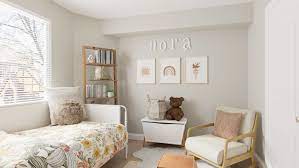Skirting boards are popular by various names, such as baseboards, wainscoting, skirting, trim, mopboard, base molding, or floor molding. Commonly, they are vinyl boards or wooden boards that cover the lower portion of the interior walls. They do the job of covering the joint between the floor and the surface of the wall. Skirting boards also cover the jagged edge of flooring that is close to the wall. Hence, people use them to protect their walls from abrasion, kicks, and furniture. Most of the time, skirting boards work as decorating moldings too.
Baseboards comprise a simple plank, and they are screwed, glued, or nailed to the wall. And in older houses, skirting boards are created from several moldings, and they are used for decoration purposes. At times, people confuse skirting boards and wainscots, but there is a thin line of difference between them. Commonly, a wainscot covers the distance from the floor to nearly 1 to 1.5 meters high, but a baseboard does not reach a height of 0.2 and remains below this. People experiment with various sizes and designs of skirting boards and alter their thickness, height, length; and this way, they get a new look and finished skirting board.
The choices
When the matter comes to underlays or floors, you will find that skirting boards are created from different materials, and all of them give the ultimate product some functions. Hence, they perform fine when they remain exposed to some conditions. Hence, it becomes vital to select the ideal product that would serve well to the situation. Skirting boards are created from HDPS, PVC, and MDF. At times, you will find baseboards to be created from the integration of all these materials.
The description
Get an explanation of all these abbreviations.
Simple & Modernist
Most of the time, people consider the unfussy look when they undertake a minimalist new build or modern renovation.
Contemporary & Decorative
The contemporary and decorative profiles grab the attention of every person as they look highly enticing.
Traditional and simple
People opt for a traditional and simple profile when they renovate their existing period properties. This time, they looked for a profile that would match well with the architectural period. When people select a highly restrained profile, they accept the building’s history and do not clash with modern fittings or furnishings.
Decorative skirting boards
A decorative skirting board seems to be ideal for people when they want to get a traditional, aesthetic, and luxurious look. These skirting boards work fine as tall skirtings, and they seem to be ideal for rooms that have high ceilings. This way, people get an ultimate opulent effect.
The best option
Commonly, skirting boards are created from wood, and they are designed to cover the lowest portion of the interior walls. These boards cover the joint between the floor and the wall and give a decorative touch to the entire space. You can fix skirting boards using strong adhesive glue or screws. If you get these boards from trustworthy companies, you will get a huge array of boards with different materials, profiles, and finishes. This way, you will get an elegant finished skirting board.


